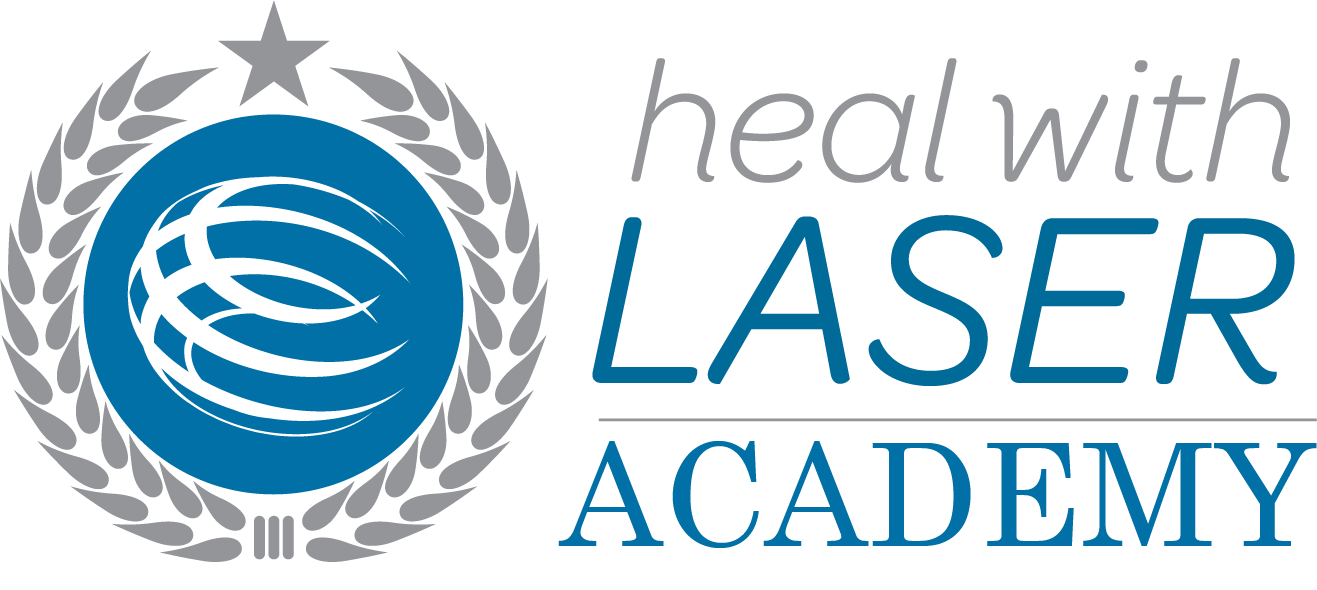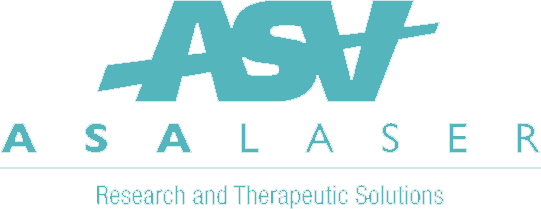Introduction – transcript
My name is Dr. Karina Patel and I’m going to be talking about how to build your practice using therapeutic lasers. So, this is an example of what it looks like when your practice has the therapeutic laser. Now, I’m the director of the TMJ and Sleep Therapy Center of London, also the center in Dubai, and that’s just a photo from our Dubai center.
So, I’ve spent a fair bit of time in Australia. This is from the AACP conference a few years ago. I’ve also trained with Anne-Maree Cole with the LVI Institute, and that’s practicing neuromuscular dentistry and EMG imaging, and also Derek Mahony’s mini residency. And I have to say a thank you to Dr. Olmos for some of his contribution in the slides today.
That’s from the opening of the TMJ and Sleep Therapy Center. So shortly after I left Australia, we opened one in London, which deals with patients with craniofacial pain problems and sleep problems.
Okay. So, this book here is actually a really good resource to have, Therapeutic Modalities in Rehabilitation. And in particular chapter 13, which talks about low power laser therapy, the physics, types of lasers, laser treatment techniques, clinical applications for lasers, suggested treatment protocols and their safety.
So, therapeutic lasers work on a certain part of the electromagnetic spectrum and that’s between the visible light and the infrared. Now, we’ve got loads of different light displays all throughout the world and this is just one of them in Dubai.
I don’t know if that will play. You might have to fix that.
Right. So, how does a laser actually work? So, essentially what you have is an external power source applied to this area. You’ve got a gain medium, which is the central area, and that can be either a liquid, solid or a gas. So when you have that external power source applied, it goes through the reflective mirror into this gain medium area. The other side of it is held together by a semi-transparent mirror. So eventually when enough of the photons created in this area bounce back and forth between, the semi-transparent and reflective mirror, it’s too many to be contained in that gain medium and you have a laser light emitted at the end.
Now, this is another good resource, Practical Pain Management. This volume was in October 2010. It talks about all the different uses for lasers in medical. So for Parkinson’s disease, we can see that you have an increase in mitochondrial movement and therefore improve neuronal function. In trigeminal neuralgia, it acts as a pain supplement combined with traditional therapies and also post-herpetic neuralgia. You can actually use the laser next to the stellate ganglion, and it can act similar to a nerve block. We’ve also seen for cerebral palsy in a study conducted with children, it helps to improve stiffness, epilepsy episodes, cortical blindness, hearing, speech disorders, muscle tone, and function, and also movement.
So, the Rochkind study shows that low power laser irradiation progressively improves peripheral nerve function in long term peripheral nerve injured patients, which then gives you significant functional recovery. This is another good resource as well, so Laser Therapy Applied to Clinical Dentistry. It goes through every single or specialty, its applications and also the low level laser effect. So, there’s no other way to do it other than to just go through the list. So for endodontics, if we start there, we’ve got for dentinal hypersensitivity, we have reduced tactile and thermal sensitivity. For the pulp, we can improve dentine formation in the pulp. In maxillofacial surgery especially bisphosphonate related osteonecrosis, it helps to reduce the pain, fistula formation, edema, any mandibular distraction also improve the healing. For advancement and for temporary mandibular joint disorders, we see an improvement in osteogenesis, reduced pain, improvement in the range of mandibular movement and also improve bone healing.
So for oral pathology, we’ve got burning mouth syndrome, herpes simplex virus, lichen planus, all of those conditions. Again, we can improve the healing, lesion size and it can be as effective as corticosteroids. In oral mucositis and in xerostomia, we can also improve the severity, the incidents, and sometimes we can actually get regeneration of salivary duct epithelial cells, and therefore an improvement in the salivary flow.
In oral surgery, again, with the healing. We can see improvement after gingivectomies, gingival inflammation is also reduced. And for extractions, you can actually improve the mechanical sensory perception and therefore again reduce the pain, swelling, and any oedema or trismus.
For orthodontics, we’ve actually been able to see a 30% accelerated tooth movement, foster remodeling, improved healing, improved attachment, and osseointegration. And in children, we can help to reduce any pain from small cavity preparations. That’s because of its effect on the C fiber or C pain nerves being reduced.
For periodontics, we can see for chronic gingivitis and periodontal ligaments, also for periodontitis again reduced inflammation and improved healing. And the last one for prosthodontist, they can see with denture stomatitis, there’s an actual reduction in reducing in yeast and also palatal inflammation. For implants as well, we’ve got the bone implant interface strength significantly improved and the osseointegration.
So as you can see, the possibilities are endless, and there’s some just some few papers to actually go through the findings with different oral specialties. So, we’ve got the effects here on orthodontic movement. So basically, the laser was applied to certain teeth, the canine teeth, every 30 days. We also had 10 seconds of the laser light emitted and that was four days of the month. Now, what they saw was an accelerated movement of those canines, accelerated retraction, and it was 34% more that was recorded compared to the control group. And that’s just a graph demonstrating the accumulated retraction in the laser group compared to the control group.
So, in the Journal of Laser Dentistry, we can also see its effect on aligner sequencing in the Invisalign system. And here we actually see that we can actually save four days per aligner change, and that can potentially save up to 130 days off of a full treatment.
And this is how the laser was used. So, in these six areas here, and each area was irradiated for 90 seconds, and that was between each aligner change. In endodontics, we can also see the reduction in postoperative pain. And again, many, many uses for it here. So the stimulation of osteoblasts for orthognathic surgery. For soft tissue lesions, herpes, denture sores, angular cheilitis, we can actually reduce pain and recurrence. Also for infections, dilating lymphatic vessels, reducing blood vessel permeability, and therefore healing quicker. And again, for the C fibers and pulpal pain in primary tooth restorations having an analgesic effect.
We can also reduce inflammation by using the laser at the apex of a tooth. And there are certain acupuncture points that we can use the laser on as well. So, there’s certain acupuncture points in our wrist actually. Point P6, which is in the middle of our wrist, now that actually helps with nausea and gagging. And then there’s LU9 and H7 along with P6, so three points together as demonstrated in the diagram, can help with anxiety as well, which a lot of our patients suffer from.
Also for anesthetic. So if you’re prescribing anesthetic for a general dental procedure, you can actually use the laser to help uptake the anesthetic quicker and also remove it from the site quicker. For implant placement, it’s been seen to help the mandible and the maxilla faster integrate with the bone. So in the mandible, you can reduce loading times down from four to two months, and in the maxilla, from six to four months. And again, with orthodontics because of the osteoblast osteoclast interaction and collagen deposition, you can have 30% increased or accelerated tooth movement.
In Parkinson’s patients, they’re obviously primarily seen by their physician, but in order to treat them dentally, what they suffer from is obviously a degeneration of the central nervous system and lower dopamine levels, which lower the brain function. So, we can actually help to improve that, which gives us a chance to actually go in and do some dental work. So, in the 2016 Journal of Pain Management, we can see that it actually helps us with pain, swelling, bleeding, speech impairment, analgesic use, and trismus. And these are the OraStretch scales or you can get TheraBite scales as well. They basically measure how much a patient can open, what level of trismus they might have and that’s a good way to validate that the laser is actually helping with reducing any soft tissue inflammation and improving opening as well.
This is actually how a laser works. So, you’ve got those light photons that are emitted. They’re taken up by the mitochondria in the cell. Then you get them absorbed by the cytochrome c oxidase and porphyrins, which generate reactive oxygen species. Then you get cell signaling and gene transcription, which leads to all those effects of wound healing, tissue repair, reducing inflammation, helping with acute injuries, chronic diseases and muscle trismus, neurogenic pain, and also the repair of nerve damage as well.
🎓 Download transcript.


